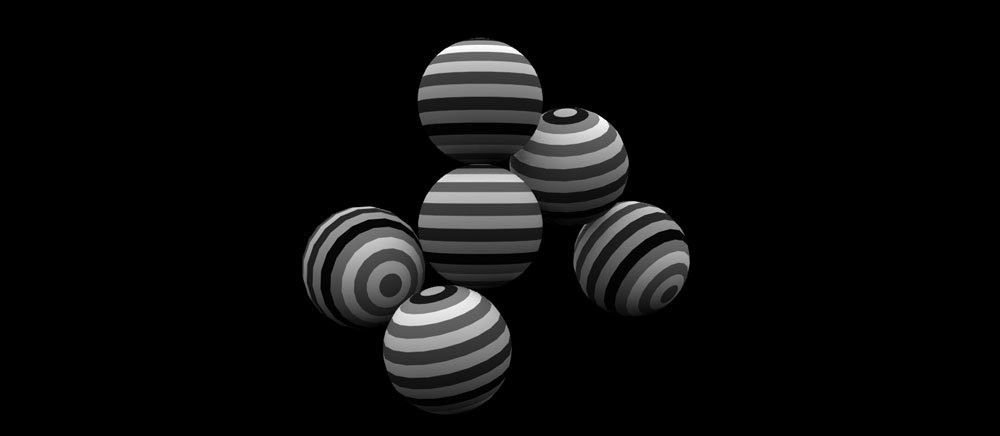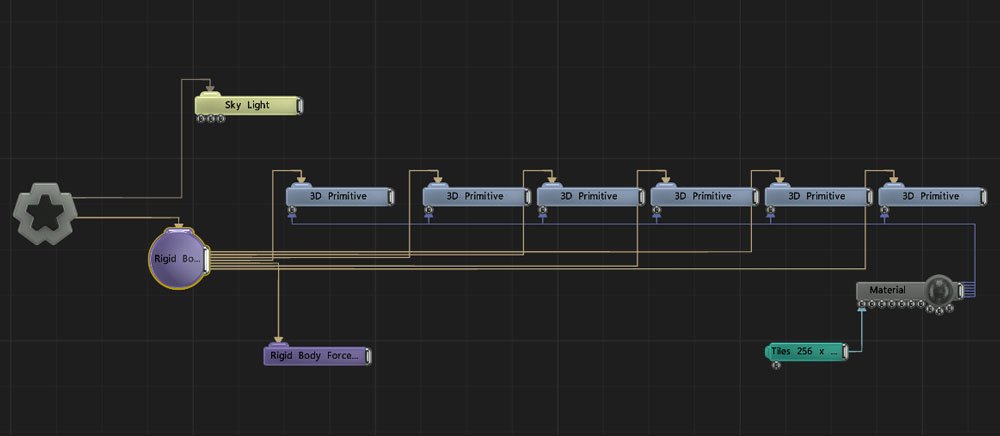Physics Root
Updated: 6 Oct 2025
The Root node of a rigid body physics system.

Updated: 6 Oct 2025
The Root node of a rigid body physics system.

The Physics Root node is the root node of a rigid body physics system. Every node using physics that is parented directly or indirectly to a Physics Root node is part of the same physics system and will interact with each other. 3D Objects, Primitives, cloners with Rigid Body Effectors, and Rigid Body nodes may be part of physics systems and may interact with each other.
The Physics Root node defines the global properties for the simulation, such as gravity, dampening and smoothing. It also defines the physics frame rate. Physics simulations are stepped - objects move by a small amount at each time step and collisions are tested for their current position at each step. This means that if an object was moving very fast and colliding with a very thin object, it may be able to pass through it - which would be undesirable. As such is common for physics to be updated at a higher frame rate from rendering to improve accuracy. It is also desirable to maintain a constant update rate for physics. The Update Frame Rate parameter defines the desired update rate of the physics system in FPS, which is used to determine the number of update steps for the physics system in each frame. For example, given a render FPS of 30 and an Update Frame Rate of 300, this would require 10 physics update steps for one render frame. The Min and Max Update Steps parameters further clamp the number of steps per frame. Once the number of steps for the frame has been determined, the physics time delta is derived from the render frame’s time delta and the number of physics update steps.
Each physics update step takes a certain amount of time to complete and puts a load on the system. In a real-time system a large number of physics steps may put enough load on the system to slow down its render frame rate. This can create a feedback loop: a lower render FPS results in more physics steps required to meet the physics FPS, which in turn adds load on the system and reduces the render FPS. As such it is important to balance the number of physics steps with the performance of the system and reduce it accordingly to maintain performance. When rendering to video this is not a concern.
These properties control the core behaviours of the node.
| Parameter | Details |
|---|---|
| Gravity | Gravity strength. Defaults to 9.8 but should be adjusted to reflect the scale of the scene. |
| Floor Collision Enabled | Generates a default floor plane to collide all rigid bodies with. |
| Floor Height | The height of the default floor plane. |
| Floor Static Friction | How much resistance there will be for rigid bodies that are at rest relative to the floor to begin moving. |
| Floor Friction | How much other rigid bodies will be able to slide along the floor. When two rigid bodies of different frictions interact, the minimum value is used. |
| Floor Bounciness | How much other rigid body will bounce off of the floor. |
| Max Velocity | The maximum velocity any rigid body in this system can reach. |
| Max Angular Velocity | The maximum angular velocity any rigid body in this system can reach. |
| Dampening | Reduces the velocity and angular velocity of bodies over time. |
| Smoothing | Smooths motion of bodies over frames to remove the visual appearance of jitters in the physics system. |
| Update Frame Rate | The frame rate step of the physics system. for example, at update frame rate 600 in a project running at 60 fps, 10 physics steps will be executed per frame. |
| Min Update Steps | The minimum number of physics steps per frame. |
| Max Update Steps | The maximum number of physics steps per frame. |
| Time Til Idle | The amount of time an object can be within the idle movement threshold and remain active. |
| Idle Movement Threshold | The minimum amount a physics object can be moving before it stops receiving updates. |
These properties set the visibility of debug items in the viewport.
| Parameter | Details |
|---|---|
| Show Rigid Bodies |
Visualise the rigid bodies in the viewport.
|
| Show Contacts | Visualise where rigid bodies are making contact in the viewport. |
The properties control the time at which the node is active. See Timeline for editing time segments.
| Parameter | Details |
|---|---|
| Duration |
Control the duration of the node’s time segment.
|
| Node Time | The custom start and end time for the node. |
| Duration (Timecode) | The length of the node’s time segment (in time). |
| Duration (Frames) | The length of the node’s time segment (in frames). |
| Time Segment Enabled | Set whether the node’s time segment is enabled or not in the Timeline. |
There are no inputs for this node.